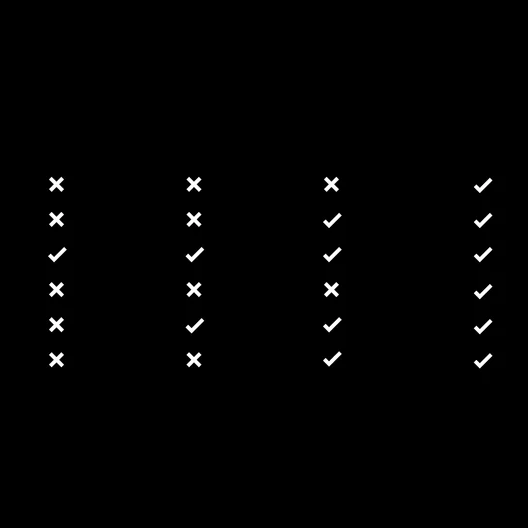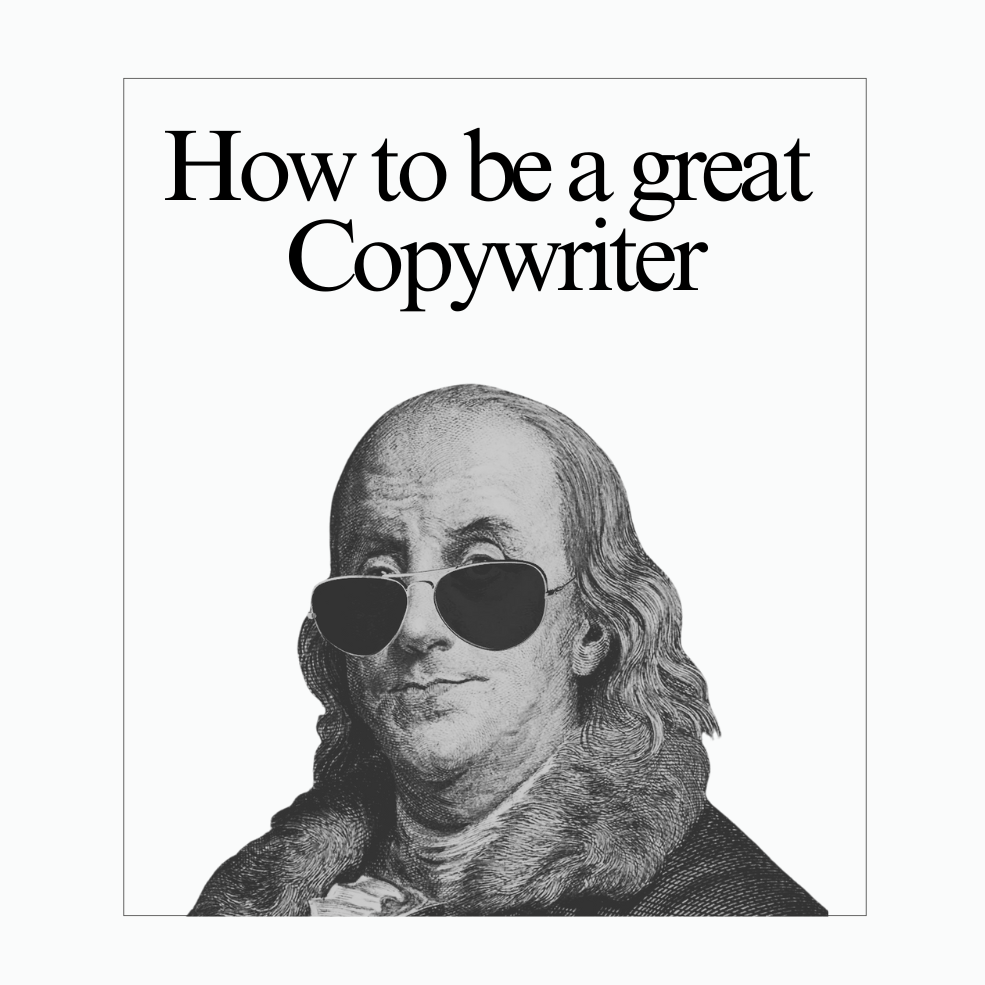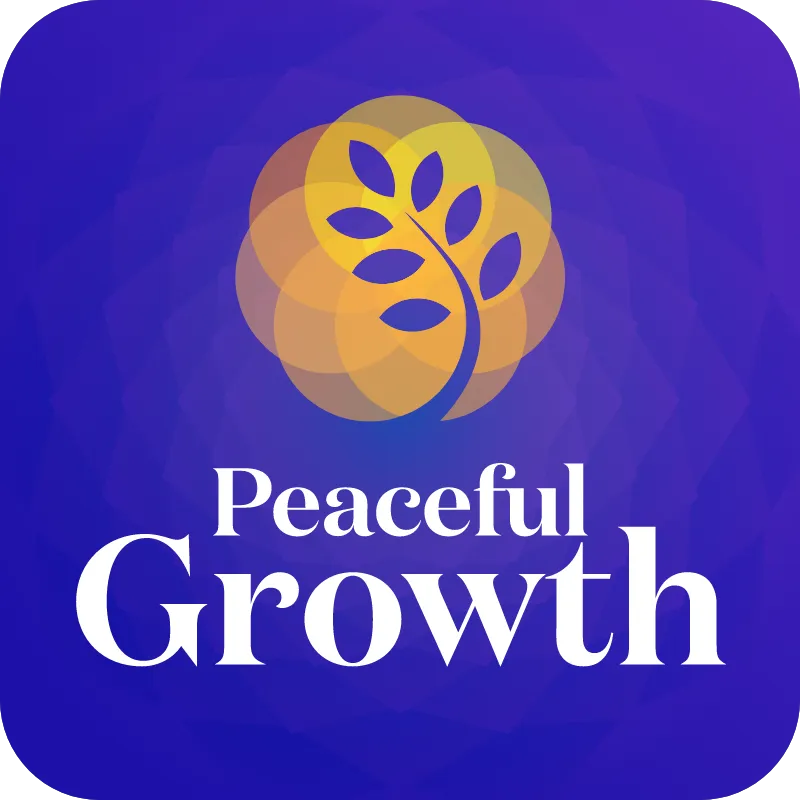What I Learned (and You Can Too) From My Million-Dollar Mistakes

Welcome to Peaceful Growth, where you will find actionable tips to grow your agency to $5M without working overtime.
In this issue, you'll learn:
- My five mistakes collectively cost my business 1 million dollars.
- Lessons I learned (and you can too) from these reflections.
- Inspiration to do the reflections on past decisions.
As an agency owner, we have to make many important decisions—hiring new talent, opening offices abroad, or experimenting with new revenue streams like building SaaS products and new marketing campaigns.
I’m sure… we all spend ample time thinking, evaluating, and weighing all the pros and cons before making these big decisions, right? But here is a million-dollar question: Do you spend enough time reflecting on these decisions afterward? Are you examining what worked and what didn’t?
A few months ago, my business partner, our Director of Business Development, and I sat down during our strategy retreat in Portland. We put a 30-minute timer each to reflect on our costliest blunders—those "million-dollar mistakes"—and the lessons we learned.
I’m going to share some of these decisions and missteps that led to us paying a million-dollar dumb tax. From one agency owner to another, I hope you can learn from my mistakes and also do this kind of reflection with your team.
Mistake #1: Tried to Build a Big Product Business instead of Testing the Idea with a Plugin → $50,000
What happened: We invested ~$50K in building a SaaS tool designed to monitor website performance. However, it didn’t generate enough traction, so after three years, we had to shut it down.
Lessons Learned:
Do a very small MVP: I should have started smaller. Instead of trying to launch a big SaaS tool right from the start, I could have built and released it as a simple WordPress plugin.
Buy before you build: I recognized that my engineering team was exceptionally good at enhancing our clients' website performance. This led me to believe they could successfully develop a product centered on this expertise. However, I overestimated their ability to build a SaaS tool from the ground up. Looking back, it would have been smarter to acquire an existing tool or plugin and then ask my team to improve.
Mistake #2: Overinvesting in a Part-Time Product → $50,000
What happened: We teamed up with a client to build a SaaS tool. They were committed to taking care of product design and marketing, and we invested our engineering efforts into making it happen. Sadly, after two years, we had to call it quits.
Lessons Learned:
One of us should be full-time: I should have ensured that at least one partner was fully dedicated to our product business. Trying to manage it as a side project simply didn't work.
Invest only if we are confident and passionate about doing alone: I learned that it’s vital to choose projects that excite me and that I understand deeply. This passion and knowledge are what keep a project going, even if I end up handling it solo.
Set clear rules on when to leave the table: I should have set specific limits on how much time and money I was willing to invest in any project right from the start. Without clear boundaries, our project extended far beyond the planned timeframe, turning what was supposed to be a brief venture into a two-year ordeal.
Keeping engineers busy should not be the only motivation to start a product: Using downtime to engage developers in new projects can be wise, but it was a mistake to do this just to keep them busy. I should have made sure there was a genuine interest and commitment to whatever we started. In the future, I'll focus on developing smaller utility tools that not only keep the team engaged but also enhance our core business operations, similar to the way Basecamp was developed.
Mistake #3: Ignoring Red Flags from Clients → $100,000
What happened: Over the past 15 years, we faced a handful of clients who together didn't pay us $100,000 worth of invoices for our services. As a small, desperate agency, we often overlooked the warning signs.
Lessons Learned:
Don’t ignore early red flags: I should have been more vigilant for early signs that a client might not follow through with payment. I should have told my team to stop working or revoke access to the code.
Have a strong contract: I needed to ensure that our contracts were not only clear but also strong enough to enforce payment. A well-structured contract can serve as a crucial safeguard in business transactions.
Train the leadership team to be quick and courageous: I should have better prepared our team leaders to handle payment issues swiftly and confidently. Empowering them to act decisively in these situations is key to maintaining our financial health and client relationships.
(If you are in this situation already, check out my guide on collecting payment from the clients who go silent?)
Mistake #4: Bad Hiring Decisions → $300,000
What happened: Hiring can be hit or miss, even after rigorous interviews. Over the past 15 years, I've had 15 to 20 hires that just didn't work out, costing us over $300K in salaries, not to mention a ton of time and stress.
Lessons Learned:
Look beyond the monthly salary: In the agency game, the real costs include not only salary but also benefits, tools, and subscriptions. A bad hire can be much more expensive than it appears when you calculate the total cost over a year.
Credentials aren't everything: I've learned from experience that impressive resumes don't always mean a good fit. I should have focused more on how well a candidate's skills and personality matched our company culture and the specific role. Otherwise, I was just wasting money on a hire that didn't work out.
Hiring's easy, firing's hard: I should have implemented a policy of conducting a paid trial period before committing to a full-time hire. Also, create a tight feedback loop and not delay the decision to let someone go once you know it’s a bad hire.
Mistake #5: Building a "Nice-to-Have" Plugin → $500,000
What happened: Back in early 2022, we got into developing a WordPress plugin called Multicollab. It presented unique, complex engineering challenges, and we've since invested around $500K in building and promoting it. So far, it's brought in about $50K in revenue. This product stands out for several reasons: It sets us apart from the competition. It showcases our engineering prowess. It’s trusted by big-name brands like POLITICO, Smart Assets, and Gannett.
But the painful reality is that it hasn’t hit the ROI yet (not even close).
Lessons Learned:
Focus on ‘painkiller’ type of products: I should have prioritized developing plugins and products that are “must-haves”—those that solve critical needs. These "painkiller" products usually grow faster than the "nice-to-have" or "vitamin" products.
Focus on short-term sales strategies: I've realized that while having long-term strategies like podcasts and sponsorship is beneficial, it's crucial not to neglect short-term sales tactics.
Build as you grow: I initially invested too much time and money in developing features for this product. Looking back, it would have been wiser to scale our product development incrementally, aligning our investment with the growth in our revenue and sales. This approach would have allowed us to adapt more effectively to customer feedback and market demand.
Know your real TAM: Initially, my enthusiasm led me to overestimate the total addressable market (TAM) for our product. Moving forward, I recognize the importance of grounding our TAM estimations in factual data, ensuring that our investments and pricing decisions align with actual market potential.
Focus on transactions, not just vision: While being passionate about my vision is important, I've come to understand that focusing on making sales is equally important. I should have avoided getting too caught up in perfecting the vision at the expense of creating a viable product.
Key Takeaway

Confidence is built by reflecting on both your successes and failures!
Collectively, these mistakes cost my business around $1 million. Does this mean I won’t make any future mistakes? Absolutely not! As agency owners, we inherently take risks, we place big bets on ideas, and we get excited when we spot opportunities. This message isn’t meant to deter you from making bold moves.
Consider this:
if I had known X, I might not have done Y.
But without doing Y, I wouldn’t have learned X.
Lessons from our mistakes help us do more than solve immediate problems—they teach us how to handle things better next time. For example, after spending too much time on a project that didn’t work out, I learned to set boundaries. That’s what I hope you take away from hearing about my million-dollar mistakes.
"There is no failure, only feedback." – Naval Ravikant
[On a totally different note, here’s something I’m excited to share to help you sharpen your copywriting skill as a founder in 2025]
How a simple email made millions for this small business (real story)
When CD Baby, a small online music store, sent its now-famous welcome email, something magical happened.
It wasn’t just a boring “thanks for your order” message. It was fun, quirky, and personal:
“Your CD has been gently taken from our CD Baby shelves with sterilized, gloves, placed on a satin pillow, and is now being carried to our private jet…”
Customers loved it.
They shared it.
It went viral.
That playful email helped transform a small indie store into a company that sold over $100 million in music (Google it).
Why? Because great writing sticks.
It creates experiences, builds trust, and drives sales.
Not just CD Baby—companies like Groupon and Basecamp have built their success on great copywriting. It’s a 24/7 sales rep that never sleeps.
As founders, we write every day—pitches, emails, job posts, tweets. But if our words don’t connect, we lose deals, customers, and time.
Here’s a good news: WRITING IS A SKILL. You don’t “have it”, you learn it.
If you can learn only one new skill in 2025, make it writing.
I’ve spent over $10,000 on writing courses, and out of all of them, I highly recommend CopyThat—an email-based copywriting course you can complete in just 30 minutes a day for 10 days.
Check it out here: CopyThat

👋 Until next time, Anil / CEO and Co-Founder of Multidots, Multicollab, and Dotstore.
FYI…I also write about personal growth and Enterprise WordPress.
P.S. If you are building on WordPress, check out my 30 examples of how big Enterprise brands like TechCrunch, Spotify, Airbnb, and BBC leverage AI on their WordPress Sites.
In Case You Missed It
By the way, in the last issue, I shared “How to Make In-Person Client Meetings More Productive and Profitable?” Check out this link!
In this issue, you'll learn:
- Why existing clients are your hottest leads and can drive new business opportunities.
- How in-person meetings with clients are not just a cost but a financially profitable investment.
- 10 simple tips to prepare effectively for client meetings to make each visit impactful.
More Ways to Grow Your Agency
#1: I’ve interviewed founders who have scaled their businesses from $500K to $10M. Want to hear their secrets? Tune in to the Peaceful Growth Podcast for insights on how to grow your agency.
#2: As a founder, you are the most valuable—and most expensive—asset of your business. If you’re not learning and growing, you risk becoming a roadblock to your company’s success. Subscribe to Learn + Grow for tips on leadership, health, and productivity to keep you at your best.
#3: We’re always looking to invest in good and profitable businesses. If you’re ready to take your business to the next level by tapping into my network and expertise, just reply to this email.

Member discussion